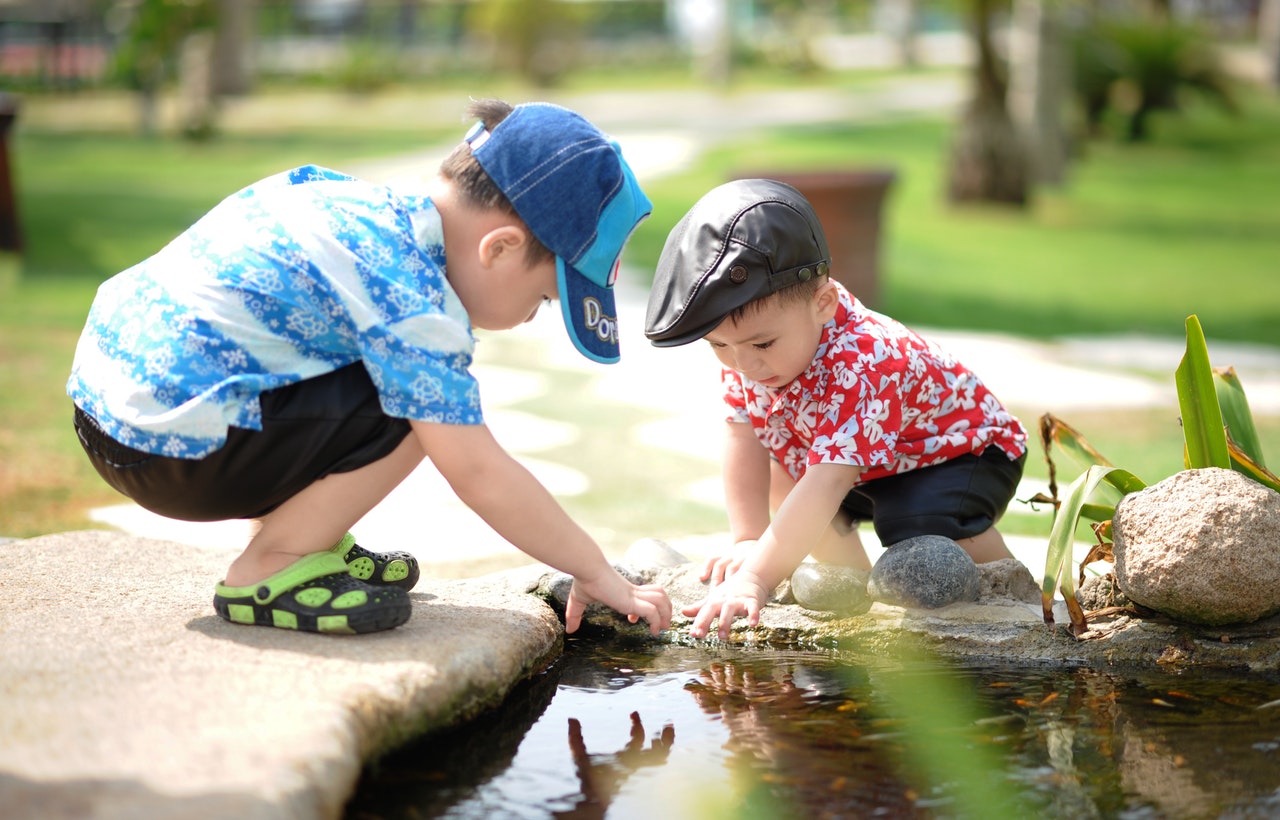

Children are naturally fascinated by other children. Kids can captivate students and hold their attention like few other things can. In fact, according to psycholinguists, language development in children is driven largely by language use of other children (for example, here‘s a study about the effects of peer language input on preschoolers). This principle is one that we’ve taken to heart.
In our eight-level video series, students learn Spanish through a lively and humorous storyline featuring children modeling the language in a fun, life-like situations that they can relate to. Students are drawn into the lives of the characters in the videos and before they know it, they become part of the stories, wanting to see what happens next, forgetting that the stories are in a different language!
Children can learn Spanish like they learned their first language.

All of us acquired our first languages through our own experiences and interactions with others. Learning a foreign language should be similar. Similar to how they acquired their first language, students learn as they connect the context, visual cues, and actions of the characters with the language they use. Since most students don’t have the opportunity to live with a family speaking Spanish, we thought we would give students the next best thing. And students have ample opportunity to practice speaking Spanish with a plethora of games and hands-on activities built into our curriculum.
Students get the benefits of learning Spanish through stories.
Learning through stories is one of the most ancient and universal teaching techniques because it works. A story with an ongoing plot, good character development, vivid details and colorful graphics, unexpected twists, and humor draws us in and is easier to remember for a long time. Because it paints a picture in our minds, the content goes to our long-term memory and we retain it. It becomes part of us.
Students learn day-to-day Spanish conversations from the beginning.
At the heart of language is the connection between people, to communicate our wants and needs, and to engage with others to build relationships. Being able to connect with others in Spanish will provide your students with many incredibly rewarding experiences and excite them about progressing through their language-learning journey.
Unfortunately, many programs, even for children, focus on explicitly grammar-based learning or isolated units (such as teaching a unit of only colors, then numbers) and as a result, students lack the skills to have even the most basic conversations in Spanish, even after several years of study. After all, in real life kids don’t learn the names of all fruits or all household items in their first language at the same time. Because they learn from (and for) conversation, kids learn words like “dog” and “eat” much earlier than they do “grapefruit.” Just as the most practical aspects of language are (unconsciously) prioritized when we learn as infants, our Spanish curriculum focuses on the essentials for real-life communication so that students learn to converse, not to recite!
Focusing on conversation develops the essential skill of spontaneous recall and results in long-term retention.
Our Spanish curriculum is designed to optimize student retention of key concepts by teaching through context-rich conversation, never resorting to the rote memorization techniques that act as the foundation for far too many language-learning programs. With our approach, children are constantly engaged, become part of the stories, and don’t realize they are learning Spanish. Before they know it, they’re associating actions with the new language automatically. Instead of a forced effort to recall, students can quickly and easily retrieve the Spanish they want to use when they need it. As we’ve observed in our students over the years, the result is that the Spanish they learn are natural, automatic, and stored in their long-term memory.
Our curriculum offers teachers and parents many choices so they can easily customize and implement the program that best benefits their students.
Students have different learning styles and Teachers and Parents have different goals for their students. Whether you have a lot or a little amount of time for Spanish instruction, a variety of ages, and learning styles in your classes or family, our program will work for you. Most of the video lessons are only five minutes, and the teacher’s guides include an extensive set of hands-on activities to choose from. Students watch the video lessons; then teachers simply choose the supplemental activities that work best for their schedule and goals and accommodate the needs of their students.
When students learn Spanish using immersion, they will get all the cognitive benefits that come with learning a foreign language.
Learning a foreign language is one of the single best ways to strengthen a child’s brain. It uniquely develops the neural pathways in the hippocampus and cerebral cortex, the language centers of the brain.
However, to maximize the many cognitive benefits, students must learn through immersion. This is because their minds must work out for themselves the connections between the actions or objects and the language, without resorting to their first language. We never use a translation, which inhibits a student’s ability to think in the language and be more automatic with it. With our program, your children and students are significantly strengthening their brains as they learn Spanish.
Not all immersion programs are the same. With our building-block immersion, students learn in small, manageable chunks that build up gradually over time.
Children have the benefit of time to learn Spanish and other foreign languages. They will embrace and take off with a new language when they can learn in small manageable chunks that build up gently over time. This reduces frustration and solidifies what has been learned, so it’s not superficial or rote — on the contrary, the result is a deeper connection to and understanding of the language.
When taught in a gradual and gentle way, immersion is by far the most effective way to learn Spanish and other languages. Our method teaches using a building-block immersion which first breaks down the language into smaller words and phrases and then gradually integrates the language together into sentences and then paragraphs. In this way, students aren’t intimidated by immersion, which can lead to frustration and a negative attitude towards Spanish. It also means that in time, students learn to speak Spanish in complex and naturalistic sentences, beyond simple words and phrases. Many programs simply don’t include this essential aspect of developing a student’s ability to integrate the vocabulary they have learned into full conversation. This is critical in any successful language program but is often inexplicably overlooked to the student’s detriment.
Teachers, learn more about our Spanish curriculum with our free trial for schools!


No comments:
Post a Comment